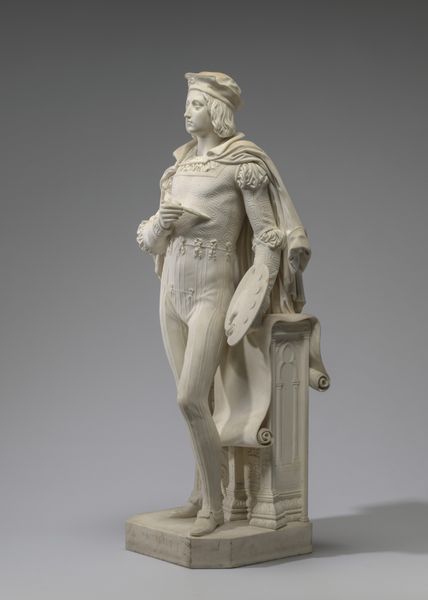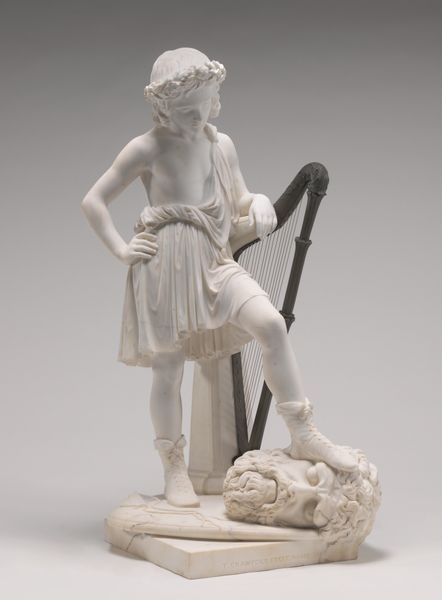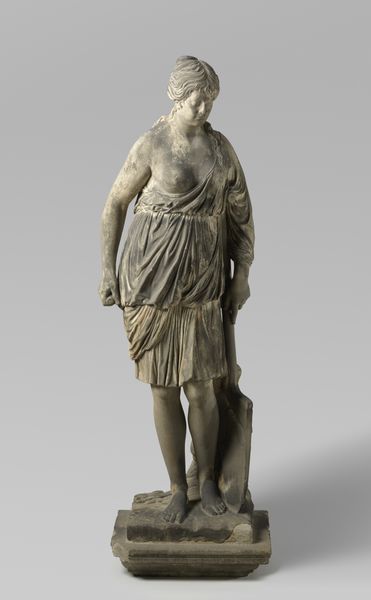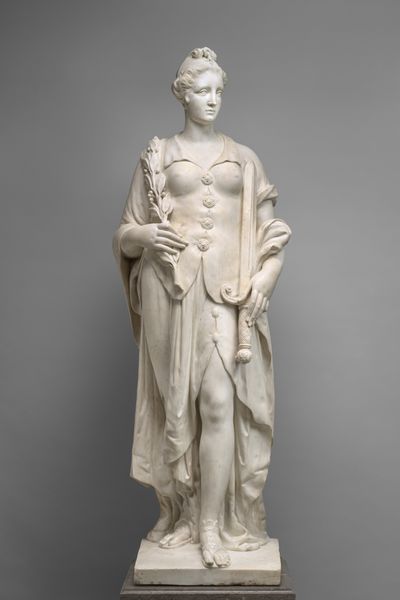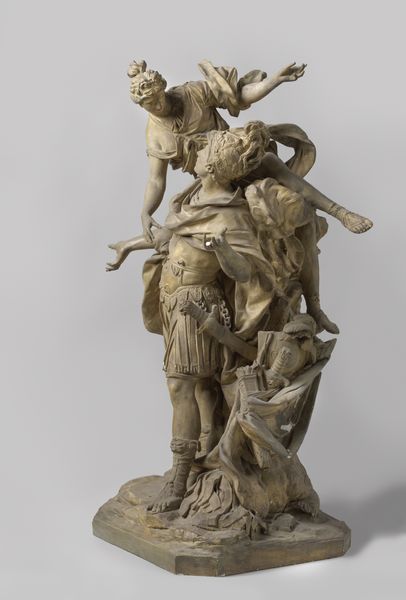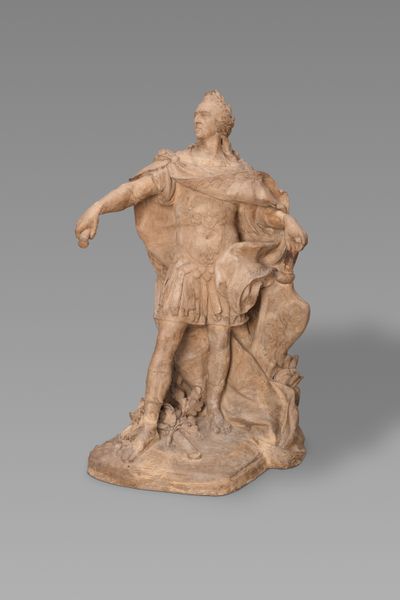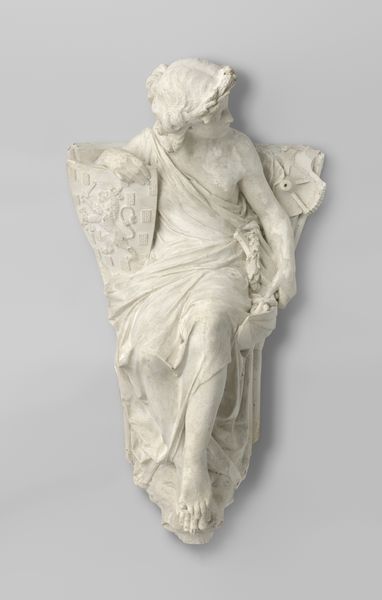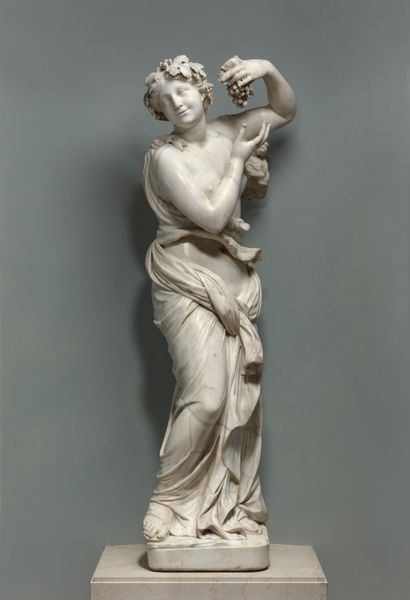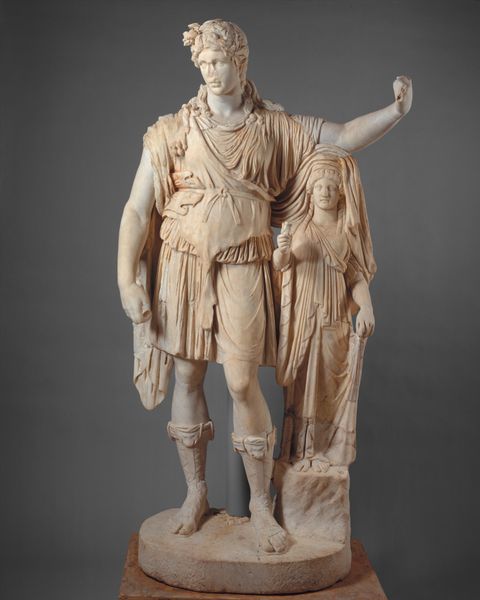
sculpture, marble
#
portrait
#
statue
#
baroque
#
sculpture
#
classical-realism
#
figuration
#
form
#
sculpture
#
history-painting
#
marble
#
nude
#
statue
Dimensions: overall: 182.5 x 76.5 x 57.8 cm (71 7/8 x 30 1/8 x 22 3/4 in.)
Copyright: National Gallery of Art: CC0 1.0
Curator: The cool, smooth marble of this piece gives it such a classic feel, almost aloof. Editor: Well, this is "A Companion of Diana" by Jean-Louis Lemoyne, created sometime between 1710 and 1724. The piece places us right into a visual history of representation. How does that strike you in the material's use here? Curator: Absolutely, it brings that association to the fore. There's a calculated elegance, but look at the detail of the drape, the tension in the hound's neck. How would that craftsmanship tie into its original context? Editor: Let’s remember the socio-political forces at play when considering production: this wasn’t just about skilled carving, it involved sourcing quality marble, which represented wealth and power, a visual link back to ancient ideals reinforcing a kind of aristocratic lineage during Louis XIV's reign. The labour itself, hidden, yet crucial to the art. Curator: Right. It makes me think about the idealization of the female form, the construction of this sort of unattainable image that art perpetuates. This image specifically presents ideas around power dynamics, gender and even class relations. Diana, traditionally a symbol of female strength and independence, is somewhat softened here. Her gaze is demure. Editor: Agreed, and observe that subtle contrast. Marble—suggesting permanence and authority—contrasts the intimate relationship portrayed, drawing the eye towards touch, loyalty through the careful articulation of musculature and posture; It reflects how even monumental materials embody evolving cultural narratives of class, gender roles. Curator: Seeing it in that light, you realize that pieces like this, as visually stunning as they are, are also deeply ingrained with all those complications. Editor: Exactly, and by unpacking these material and historical contexts, we enrich our understanding of not just the artwork, but also the societies that produced and celebrated them. It prompts me to want to better research how these dynamics shift with time. Curator: And for me it brings up urgent dialogues around representation and reinterpretation; making classical forms still relevant when examining identity and agency today.
Comments
No comments
Be the first to comment and join the conversation on the ultimate creative platform.



